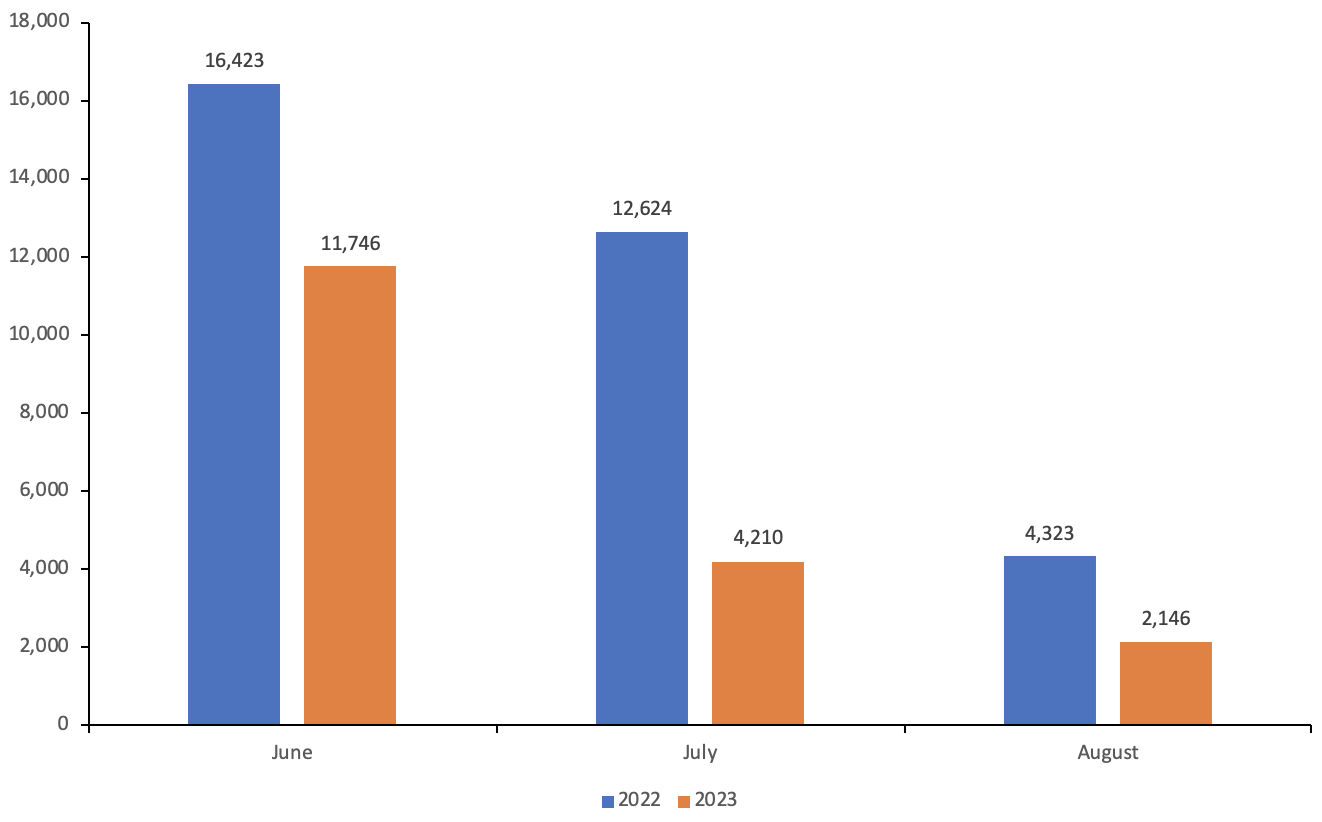We recently reported on a “straws in the wind” basis that the surge at the southern border has seemed to reduce the issuance of visas in the H-2B foreign worker program. This is for non-skilled, non-agricultural workers.
Now, with a broader statistical base, we see that the number of visas issued for this program for the summer of 2023 were about half those issued in the summer of 2022, as employers seemed to make use instead of the huge flow of illegal aliens (many with work permits) across the southern border.
In the months of June, July, and August 2022, the State Department reported it issued 33,370 H-2B visas; in the same three months in 2023 it granted 16,170 of them. That is a reduction of 51 percent.
The reason for this fall is certainly not that the government sought to discourage the program. Instead, it's very likely that the large number of newly arrived asylum seekers, and others, found jobs with what had formerly been H-2B employers. These employers are often in the hotel, restaurant, or landscaping businesses. There is a 66,000 a year cap for these workers, which has often been loosened in one way or another in the past. Former President Donald Trump’s Mar-a-Lago club and residence, for example, has used H-2B workers for years.
The data on this subject is nominally public, but must be pried out of 100+ page visa issuance datasets issued by the State Department. I have seen nothing in either government reporting or in the media about this trend. When the labor market is so loose that employers give up their access to the coddling of a foreign worker program, that should be news.
Our previous note about this trend was based on only 10 data points on what had happened to the number of H-2B visas issued in the leading five nations in the program in the months of August 2022 and August 2023. We now have data on about 240 data points showing the issuance of H-2B visas worldwide for the months of June, July, and August 2022 and for the same three months of this year. September 2023 data is not yet available. The figure below shows what we found:
Border Surge Reduces Number of H-2B Visas Issued, Summers of 2022 and 2023 |
 |
|
Source: “Monthly Nonimmigrant Visa Issuance Statistics”, U.S. State Department. |
The reader will notice in both summers that the number of visas issued dropped from June to July and again from July to August; this is normal for the program and relates to nothing more than the routine decision-making and agency timing at USCIS. What is significant is the month-to-month comparisons for the two summers: e.g., June 2022 vs. June 2023.
This program is thoroughly dominated by arrivals from Mexico, just as the H-1B program has more workers from India than anywhere else. In June 2022, for example, there were 12,105 H-2B visas issued in Mexico out of 16,424 worldwide. The next four countries that month were:
- Jamaica: 1,945
- Honduras: 839
- El Salvador: 754
- Guatemala: 733
No other country topped 200 that month. More than 40 nations are listed most months as having one or more of these workers. Often there are a handful of countries listed with a single visa issuance — in that month those countries were Belize, Chile, Czech Republic, Croatia, Haiti, Hungary, Italy, and Poland. Perhaps some residents of the U.S. wanted to bring in a relative who would not qualify for our family-related immigration categories and decided that they would “hire” Uncle Joe via the H-2B program.
H-2B is probably the only one of the four major foreign worker programs to be impacted by the border surge. We have shown in a recent posting that the payroll break that goes with the H-2A (farm worker) program will keep visas coming at the usual rates. Both the OPT program, for recent alien grads of U.S. universities, and the H-1B program for tech workers, similarly, are likely not affected by the surge; the overlaps between the OPT and H-1B populations and those of the surge are minimal.
